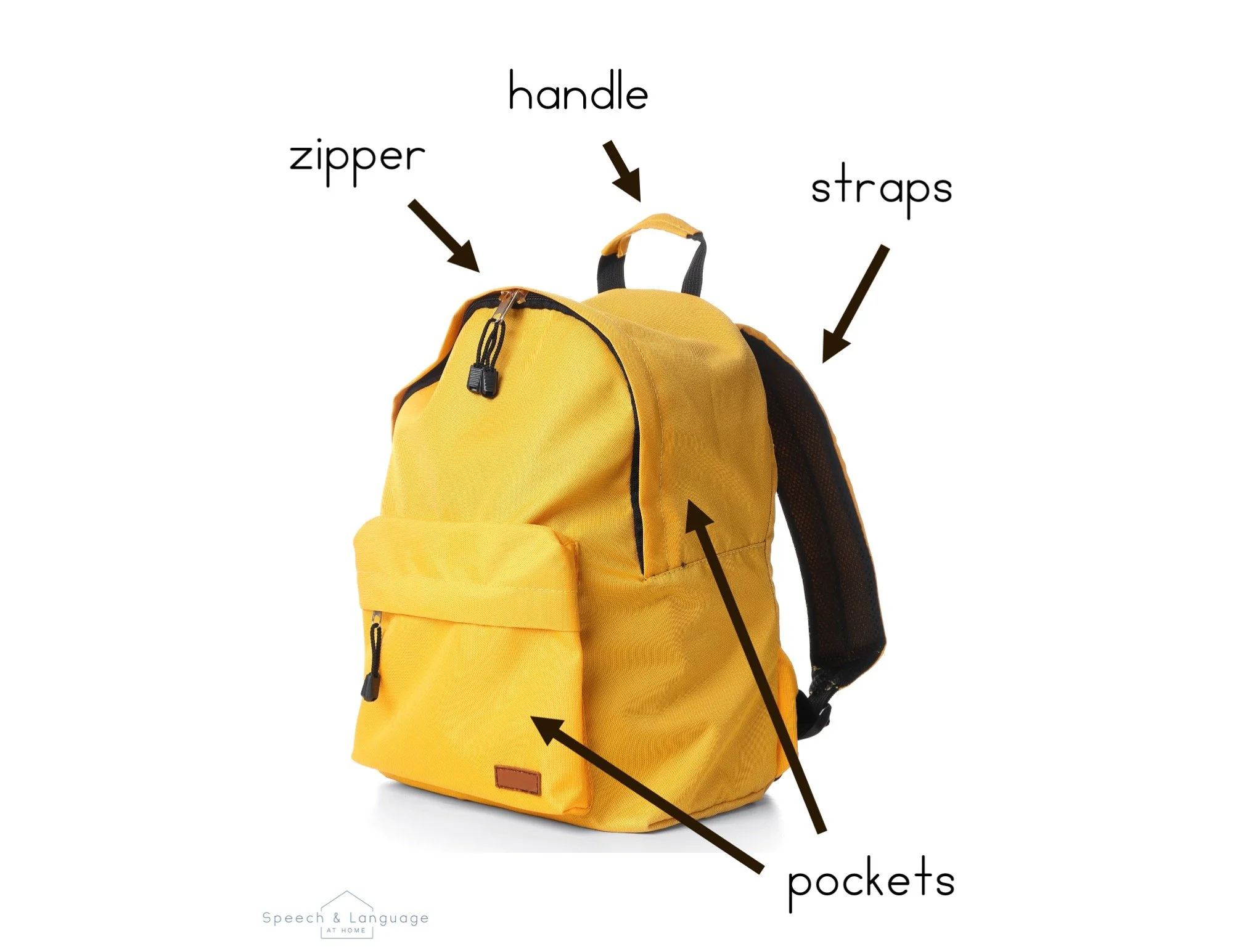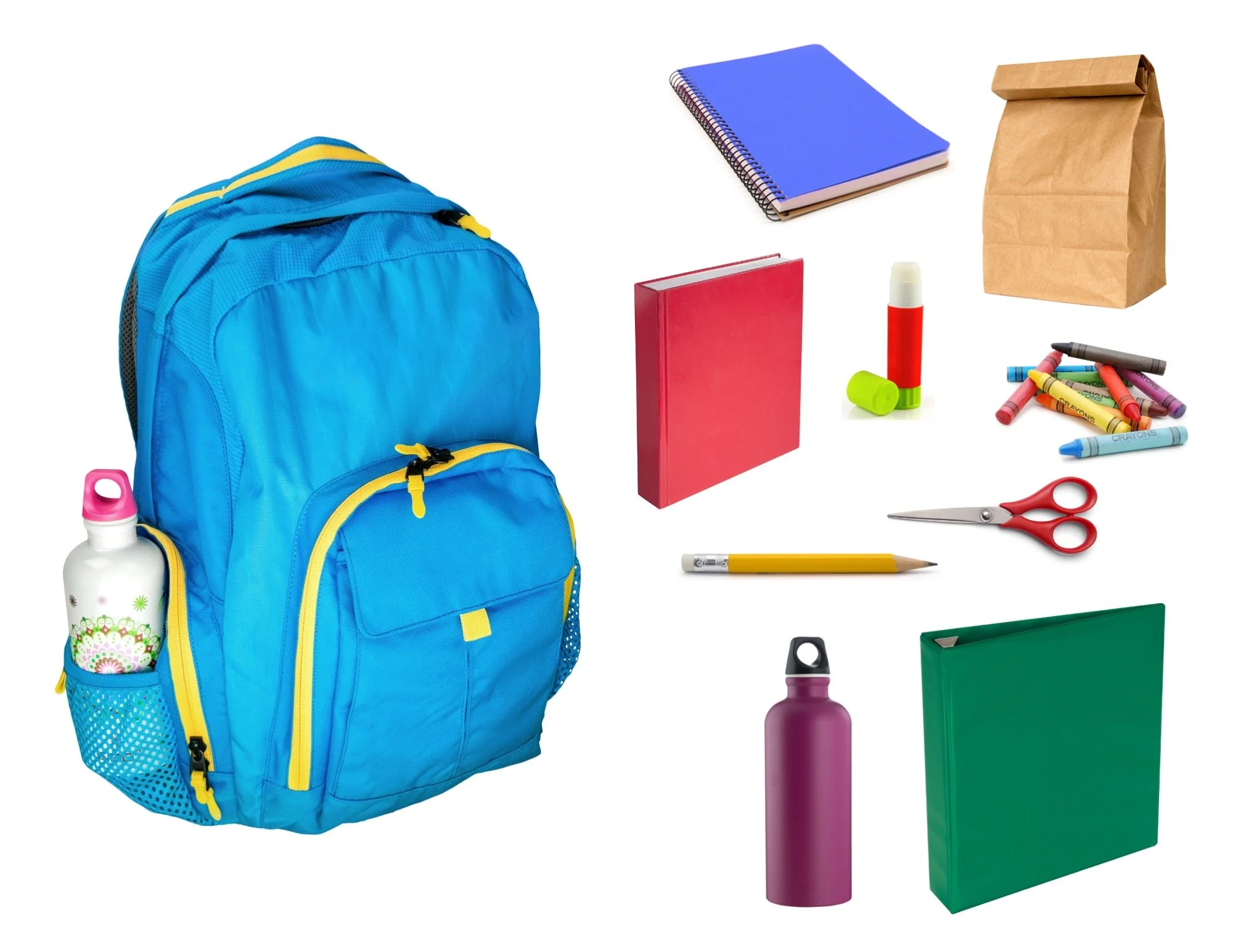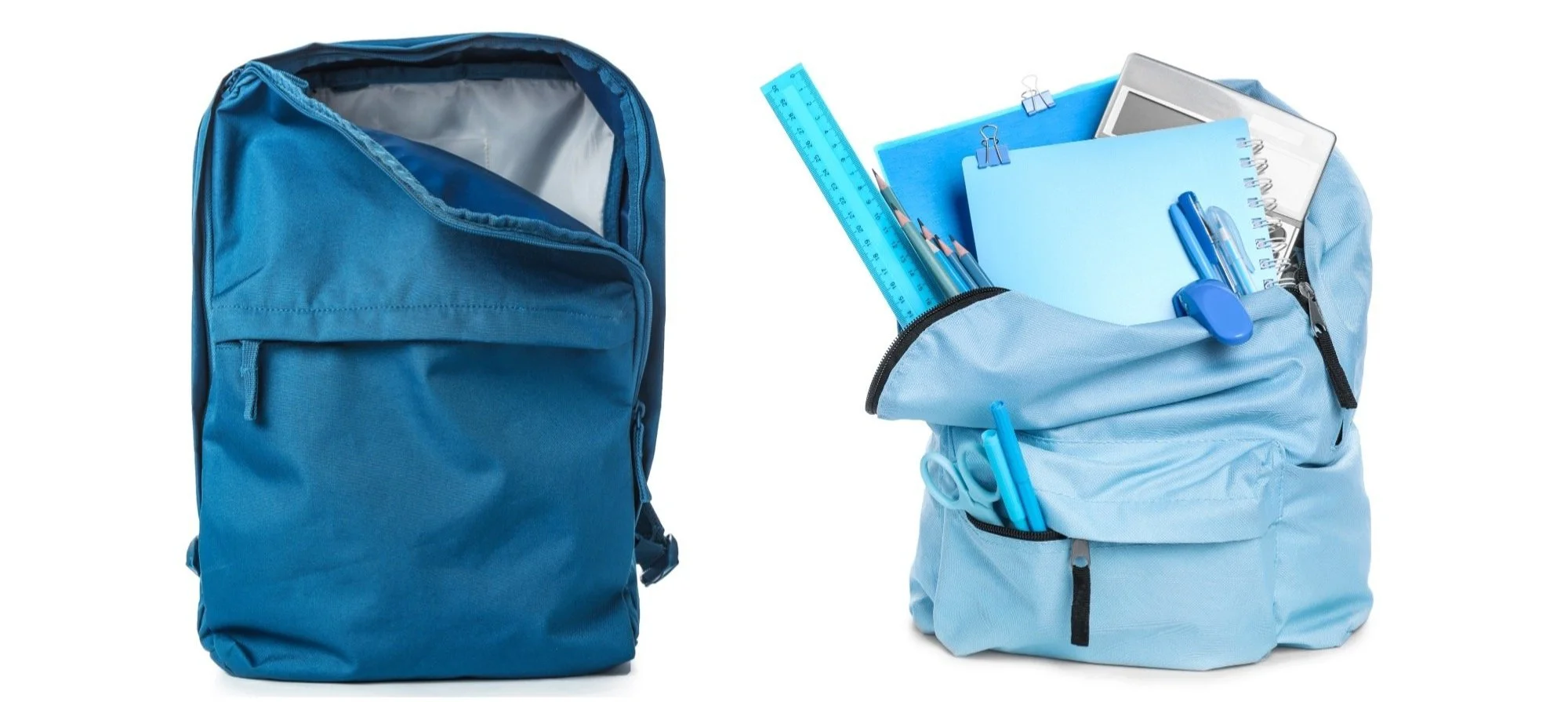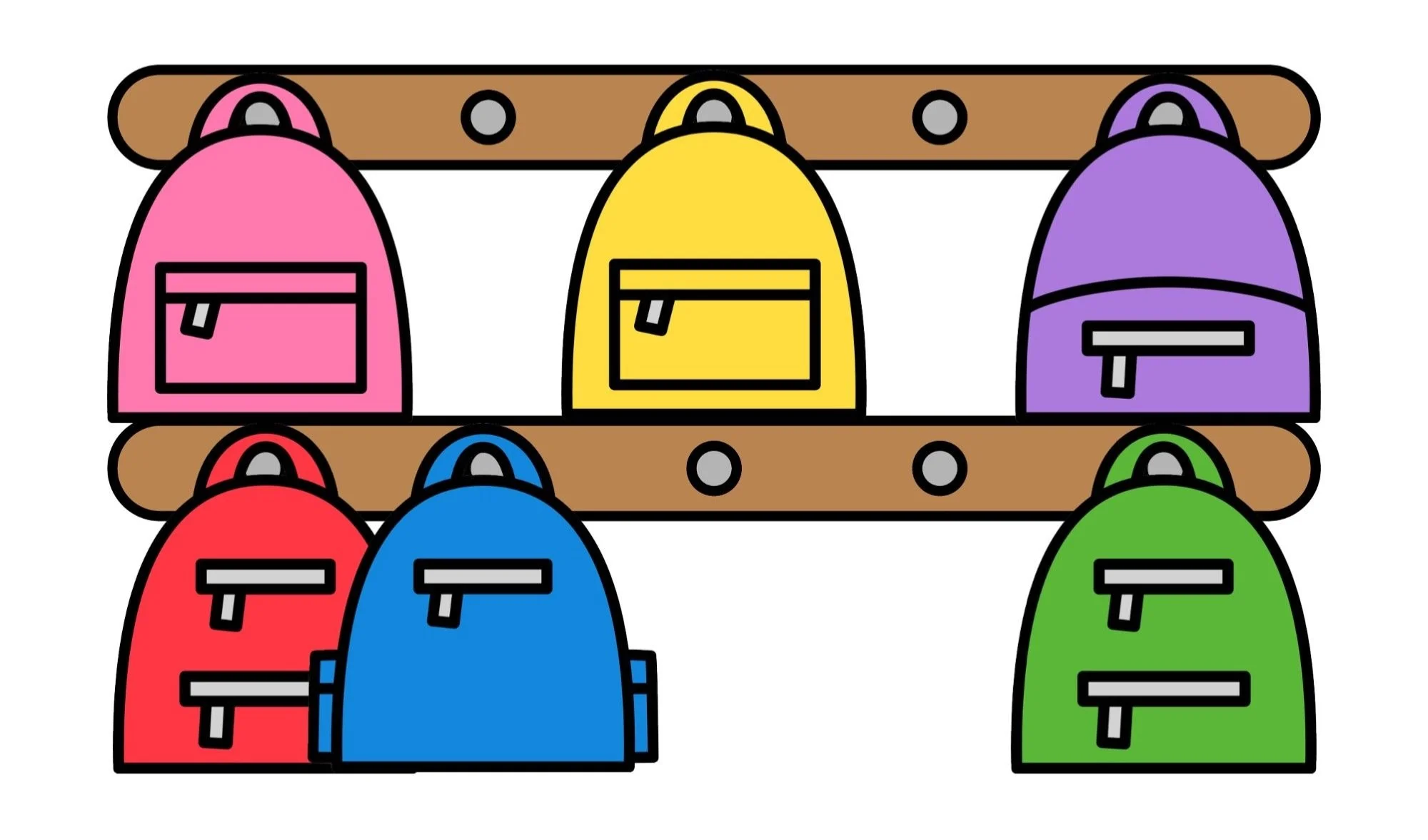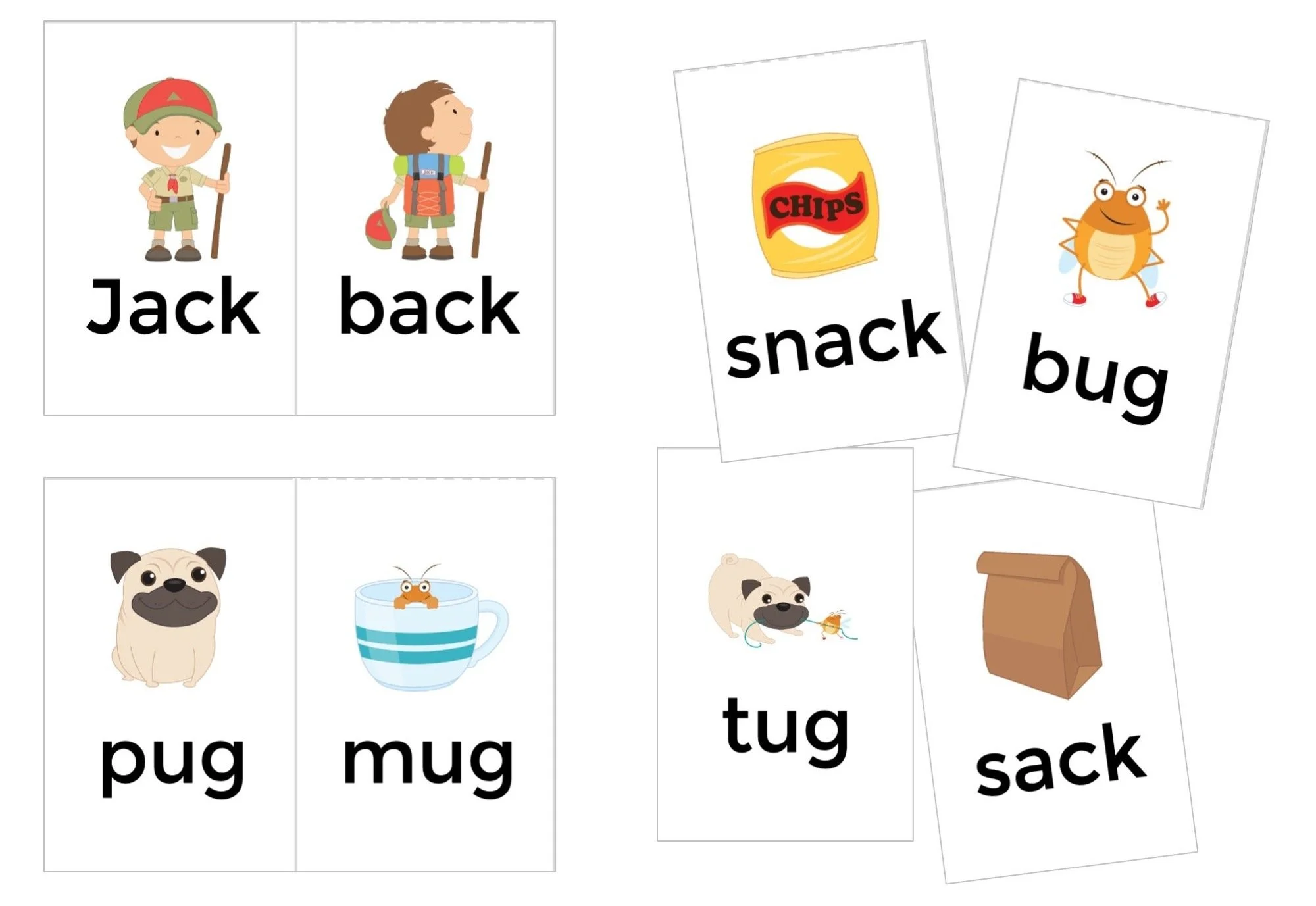Word of the Week: Backpack, Building Speech and Language Skills Through Everyday Objects
A backpack is something many children use nearly every day.
They might use them to carry things to and from school, the park, or a trip to grandma’s house.
This common object offers wonderful opportunities to build vocabulary, practice describing, and develop early speech and language skills.
Here’s how you can use the word backpack to support your child’s communication.
Parts of a Whole
Backpacks are made up of different parts, and naming those parts helps your child build vocabulary and understand how things work.
Point to or talk about these parts:
zipper
handle
straps
pockets
You can also talk about what each part does:
“The straps go on your shoulders.”
“The zipper opens the backpack.”
Labeling Common Objects
Now let’s practice naming what goes in a backpack.
Can you name the common school items below?
What do you carry in your backpack?
Compound Words
Backpack is an example of a compound word, two words joined to make one.
Back + pack = backpack
You can explain that a backpack means a pack that goes on your back.
See if you can think of other compound words (e.g., lunchbox, bedroom, raincoat).
Opposites
Use a backpack to teach early concepts like opposites:
empty / full, “Is your backpack empty or full?”
neat / messy, “Let’s keep the backpack neat.”
open / closed, “The backpack is open. Now it’s closed.”
Opposites help kids build describing skills and compare objects or situations.
Parents, does your child have a goal to increase the use or understanding of antonyms?
Antonyms is another word for opposites.
Prepositions
We can practice preposition words using these racks of backpacks.
Use the picture to answer the questions below.
How many backpacks are on the top rack?
How many backpacks are on the bottom rack?
What color backpack is in the middle of the top rack?
Which two backpacks are close to each other?
What color backpack is above the green one?
What color backpack is below the pink one?
Point to the hooks on the racks that are empty.
Rhyming
It’s time to rhyme!
Read the two sets of rhyming words below.
Can you find the two missing cards in each word family (-ack, -ug)
Jack, back, _______, _______
pug, mug, _______, _______
Generating Sentences
Let’s extend the rhyming activity into sentences or a story.
Use the pictures below to make up a set of sentences.
Or, challenge yourself and use all the pictures to tell a story about Jack’s hiking trip.
Pictures from Mini Rhyming Books.
Answers
Labeling: notebook, lunch, book, glue stick, crayons, pencil, scissors, water bottle, binder
Prepositions: three, three, yellow, red and blue, purple, red, four gray circles
Rhyming: Jack, back, snack, sack, pug, much, bug, tug
Illustration Credits: Kari Bolt, Bunny on a Cloud


